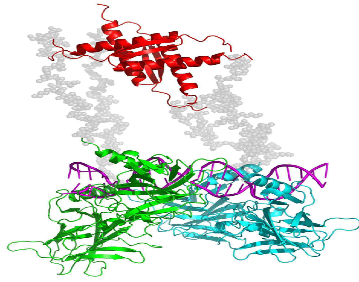Variants of subtilisin BPN' with altered specificity profiles
M Rheinnecker, J Eder, PS Pandey, AR Fersht
– Biochemistry
(2002)
33,
Contribution of residues in the reactive site loop of chymotrypsin inhibitor 2 to protein stability and activity.
SE Jackson, AR Fersht
– Biochemistry
(2002)
33,
Detection of an intermediate in the folding of the (beta alpha)8-barrel N-(5'-phosphoribosyl)anthranilate isomerase from Escherichia coli.
A Jasanoff, B Davis, AR Fersht
– Biochemistry
(2002)
33,
Tyrosyl-tRNA synthetase from Escherichia coli. Stoichiometry of ligand binding and half-of-the-sites reactivity in aminoacylation
R Jakes, AR Fersht
– Biochemistry
(2002)
14,
Investigation of transition-state stabilization by residues histidine-45 and threonine-40 in the tyrosyl-tRNA synthetase
RJ Leatherbarrow, AR Fersht
– Biochemistry
(2002)
26,
Mechanism of the -chymotrypsin-catalyzed hydrolysis of specific amide substrates.
AR Fersht
– J Am Chem Soc
(2002)
94,
Dissection of the structure and activity of the tyrosyl-tRNA synthetase by site-directed mutagenesis
AR Fersht
– Biochemistry
(2002)
26,
Determination of the three-dimensional solution structure of barnase using nuclear magnetic resonance spectroscopy.
M Bycroft, S Ludvigsen, AR Fersht, FM Poulsen
– Biochemistry
(2002)
30,
Engineered Disulfide Bonds as Probes of the Folding Pathway of Barnase: Increasing the Stability of Proteins against the Rate of Denaturation
J Clarke, AR Fersht
– Biochemistry
(2002)
32,
Structure-activity relationships in engineered proteins: characterization of disruptive deletions in the alpha-ammonium group binding site of tyrosyl-tRNA synthetase.
DM Lowe, G Winter, AR Fersht
– Biochemistry
(2002)
26,


